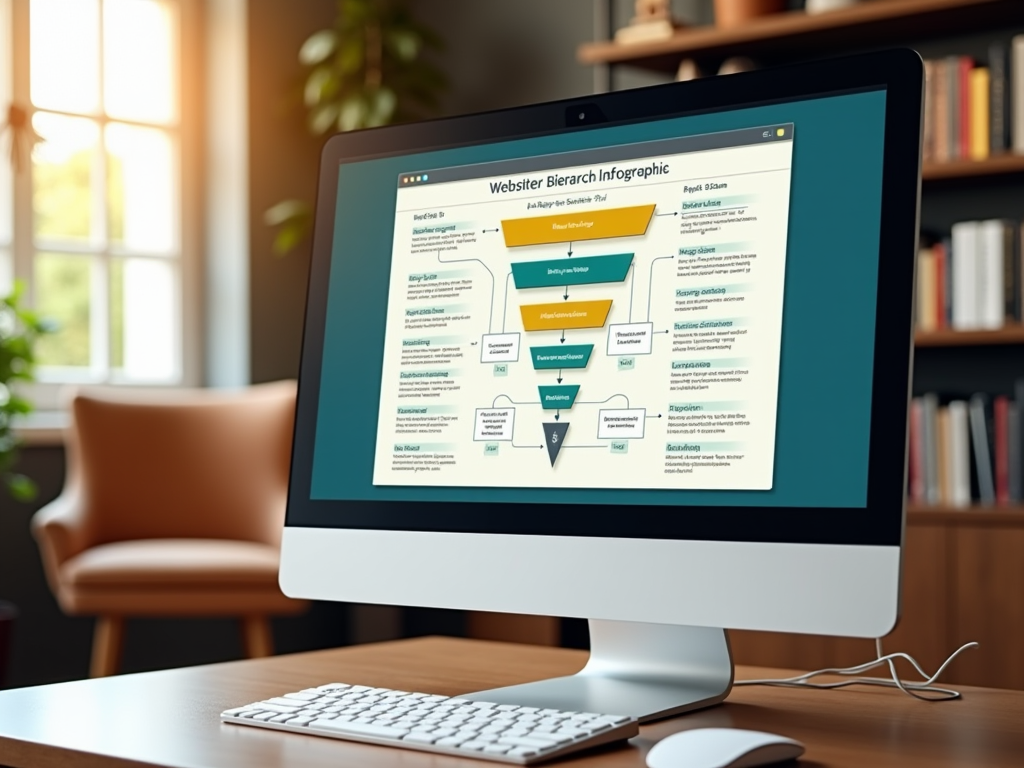
Structuring your website effectively is crucial for achieving better SEO results. The organization and design of your website directly impact how search engines crawl and index your pages, as well as how users navigate your site. By implementing a strategic website structure, you can enhance your site’s visibility, usability, and ranking potential on search engine results pages (SERPs). This article will guide you through the key elements of website structure essential for SEO success.
Understanding the Importance of Website Structure

Website structure refers to how the pages within your site are set up and linked together. A well-organized website structure can significantly improve both user experience and search engine crawling. For users, a clear structure means easier navigation and a higher likelihood of staying on the site longer. From the perspective of search engines, a logical hierarchy makes it more straightforward to crawl pages and understand the content. Thus, a good website structure not only helps in retaining visitors but also makes your site more search engine friendly.
Establishing a Logical Hierarchy

A logical website hierarchy is foundational in creating a site structure that benefits SEO. The hierarchy should resemble a pyramid with the homepage at the top, followed by categories and subcategories that provide a clear path from the top-level to the deepest content pages. This pyramid structure helps organize information intuitively, making it easy for users to find what they are searching for and assisting search engines in linking your keyword-rich content with relevant search queries.
When building your website hierarchy, consider the following steps:
- Identify main topics or categories related to your business or site theme.
- Create subcategories for more specific content within each main topic.
- Link individual content pages under the appropriate categories or subcategories.
- Use internal linking to connect related content across categories, enhancing user engagement and search visibility.
- Ensure that every page is reachable within three clicks from the homepage to promote a user-friendly navigation experience.
The URL structure of your website plays a significant role in SEO efficiency. Clean and descriptive URLs not only help search engines understand the topic of the page but also improve user experience by telling visitors what to expect. When crafting your URLs, aim for simplicity and brevity, avoiding unnecessary characters or parameters. Use hyphens to separate words for better readability. Logical URL hierarchy mirroring your website structure can make a powerful impact on SEO performance.
Creating Sitemaps and Internal Linking Strategies
Sitemaps are essential tools that guide search engines through the site’s content and help ensure all important pages are indexed. There are two main types of sitemaps: XML sitemaps for search engines and HTML sitemaps for users. While XML sitemaps help search engines discover and index your pages, HTML sitemaps enhance user navigation, providing a comprehensive view of your site’s structure. In addition, an effective internal linking strategy strengthens your site’s authority by distributing page rank across important pages, elevating the overall SEO value.
Optimizing for Mobile and Page Speed
In the current digital landscape, mobile optimization is not optional; it is mandatory. With search engines like Google prioritizing mobile-friendly sites in their ranking algorithms, your website must be responsive and offer an exemplary mobile experience. Images should be optimized, and resources minimized to guarantee fast loading speeds. Additionally, you should leverage browser caching and reduce server response times. A speedy website not only enhances user satisfaction but also boosts your SEO standings.
Conclusion
In conclusion, a well-structured website is a cornerstone of effective SEO strategy. Focusing on a logical hierarchy, clean URL structures, comprehensive sitemaps, relevant internal linking, and mobile optimization can dramatically enhance your site’s performance in search engine rankings. By investing the time and effort to structure your website thoughtfully, you’ll not only improve your visibility online but also create a more engaging and accessible experience for your users.
Frequently Asked Questions
1. What is the importance of a website hierarchy?
A website hierarchy organizes your site into a structured format, making it easier for both users and search engines to navigate your content. This enhances user experience and helps improve SEO results by ensuring logical content flow and accessibility.
2. Why are clean URLs essential for SEO?
Clean URLs are essential for SEO because they provide clear, concise, and descriptive paths that align with the website structure. This helps search engines understand the content better and conveys relevancy to users, improving click-through rates.
3. How do internal links boost SEO?
Internal links boost SEO by creating pathways between related pages on your site, distributing page authority evenly, and maintaining low bounce rates. They enhance the user experience and help search engines discover and index more of your pages.
4. What is the role of sitemaps in SEO?
Sitemaps play a crucial role in SEO by guiding search engines through your website’s structure, ensuring that all crucial pages are discovered and indexed effectively. This facilitates better visibility of your content on search engine result pages.
5. How important is mobile optimization for SEO?
Mobile optimization is vital for SEO since a significant portion of web traffic comes from mobile devices. Optimizing for mobile ensures a seamless user experience, meeting search engine requirements and improving search rankings.